Interview with Juan Baraja
With fifteen years of experience and a scholarship from the Spanish Academy in Rome in 2018, the photographer Juan Baraja (Toledo, 1984), with a studio in Madrid, has worked and exhibited for leading art foundations, including the ICO Museum, where he himself was immersed in the work of his masters. He scrutinises the textures and details of architecture, one of his greatest passions, and captures them through intimate and suggestive projects. He is currently exhibiting his project Norlandia, an analysis of the fishing sector in Iceland, at the RAC Foundation in Pontevedra until 28 May, and talks to The Sibarist about his meticulous work and his interesting creative journey.

In a few words, tell us about your training and your professional career.
Far from having the intention of being a photographer, I graduated in Fine Arts at the University of Barcelona and it was in Cuenca where I discovered photography.
At the beginning I was dedicated to drawing and my path was more related to illustration. But for the next five years I dedicated myself to study and learn photography, so I have always felt a bit of an impostor, in five years I only painted one picture!
After an Erasmus in England, where I studied at a very good photography school, I returned to Barcelona and there I focused on technical subjects, which was what interested me at the time. Then I enjoyed a Séneca scholarship in Madrid and for another year I dedicated myself fully to photography.
I soon began to work teaching at a school of image and sound, at the Fine Arts faculty in Cuenca and, as a photographer and graphic editor, at the SM textbook publishing house, while, in my free time, I tried to travel and do my own projects. Little by little the architecture and interior design commissions came and it was then when that artistic and author projects part was gaining ground and then I realized that it was what I was really interested in.
Everything I earned on the one hand I invested in travel and materials, in making very good productions or in submitting works to competitions, something I still do.
Your first solo exhibition, what memories does it bring back and what significant points of those initial works remain in your production today?
The first solo exhibition I had was in 2008 in Bilbao, in Photogallery20, where I exhibited twice to then make the first monographic of my work in Madrid. It was at Utopia Parkway, with the project Catedrales, a series from 2009-2012 that arose from a commission made in factories for a city council. Suddenly, reviewing the photos of the cement factories I realized that this type of industries shared many constructive and lighting aspects with the cathedrals and more specifically with the Gothic ones, for those central naves with almost no columns, for the contrast between the darkest areas versus the brightest ones. All this was repeated in some way in the cement factory, although with other types of materials that had nothing to do, sheets or windows of translucent plastic materials that let in a light, blue, yellow, so that it seemed almost like a stained glass window and that is why the series was called ‘Cathedrals’.

Do they follow a continuous line? What is the common thread of your works?
There are several lines. For example, there are works that revolve around a very specific building that I choose for some reason.
This happens with Águas Livres, a work on a Lisbon housing block from the 1950s, more analytical, focusing on the construction details, the design, the light or the colors, which produces a very particular and subjective journey through fragments of the building.
The same happened in ‘Cerezales’ or ‘Hipódromo’ in which this analysis of architecture is repeated in relation to light, material, form… On the other hand, there are projects that have begun to grow in a different way, such as, for example, Utopie Abitative. The series starts with photographs of architectural details of the Corviale building in Rome, during my stay at the Royal Academy in Spain in 2018. From those first images I start photographing surroundings, exteriors and people who inhabit to gradually complete the gaze that ceases to be so focused on the interior. The same happened with the work ‘Scampia’, in Naples and other later series that are part of this Italian project.
I am interested in architecture, urbanism, the city and the relationships of people in these environments.
Looking back, what did the exhibition at the ICO Museum mean to you?
For me, the ICO Museum is a reference point. I have always visited fantastic architecture exhibitions dedicated to photographers I admire a lot, such as Manolo Laguillo, who was a professor of mine in Barcelona and whom I appreciate very much. This place has given me over the years the possibility of getting to know the work of a lot of photographers and architects. When I left there I used to fantasize about the idea of exhibiting in its rooms, but I always imagined it in the distant future. To be realistic, all those photographers I admire have a long career and I consider myself a mid-career artist. I’ve been working as a photographer for 15 years, so you could say I’m almost just starting out.
The ICO exhibition was an important point to put on the table all the projects and make an analysis of the work done so far. It is important to stop for a moment and take perspective and then continue working. Alfredo Puente was fundamental in this project.
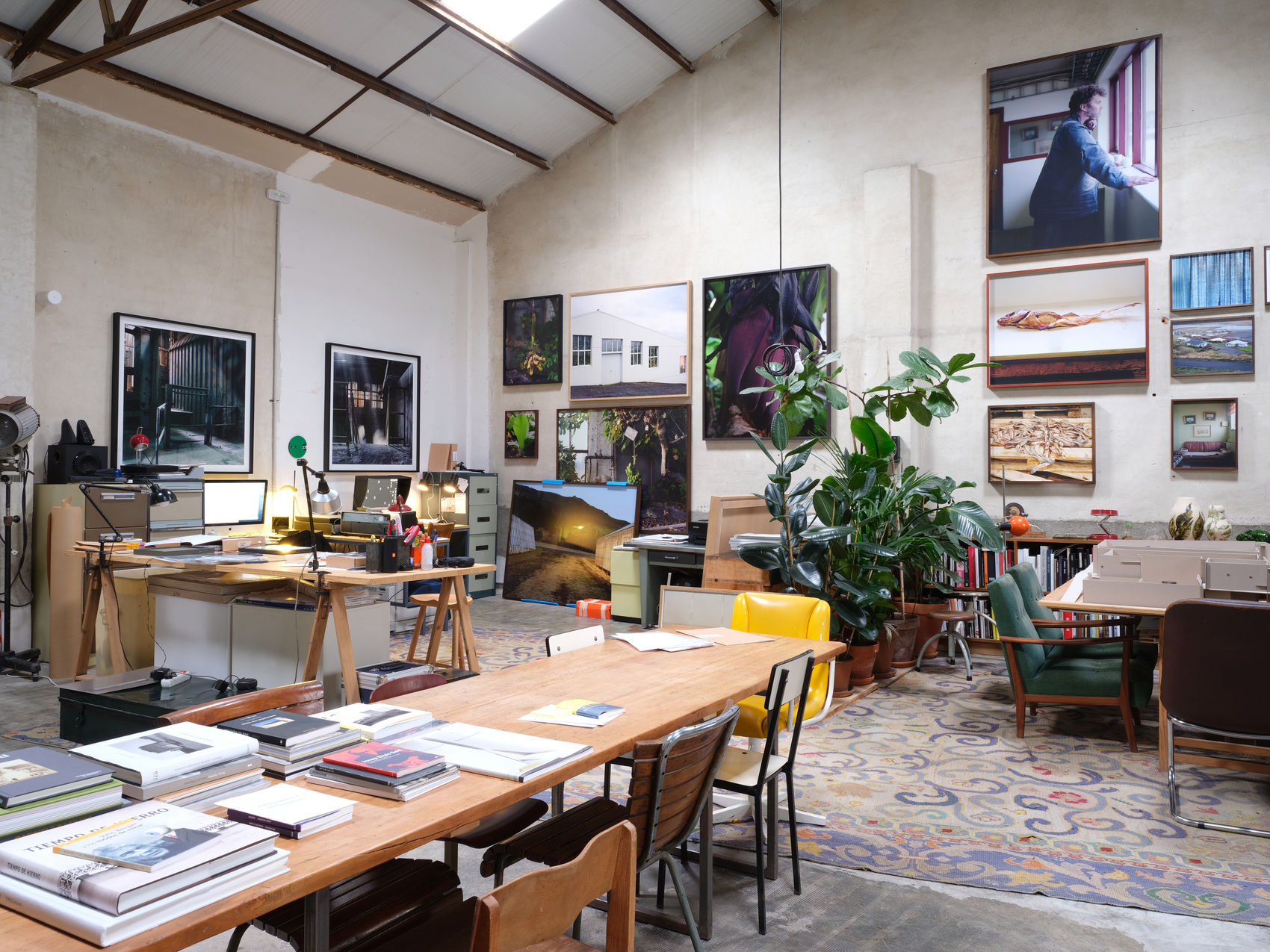
Fundación Cerezales Antonino y Cinia, Campocerrado, the ICO Museum, now the RAC Foundation of Pontevedra, how do you manage to be in such a careful selection of foundations and art centers?
The exhibition ‘Contra todo lo que reluce: efectos del tiempo’, for example, arose from the proposal that the Cerezales Antonino y Cinia Foundation made to the ICO Museum as a result of my exhibition ‘Olvidados del tiempo’ in Cerezales. A part of my work that I like a lot has to do with management and thinking about where your work fits and where it doesn’t. It also has to do with the management of the exhibition. It also has to do with the relationship you establish with people or institutions. In the case of the Cerezales Foundation, it all started when Alfredo Puente and Rosa Yagüez visited me in the studio in 2015 and proposed me to do a project on the works they were doing for the new headquarters in León, a building by Alejandro Zaera. They gave me total freedom and for a year and a half I was going to Cerezales del Condado to photograph the building in order to polish that project little by little. After that, I have continued collaborating with them. This is how projects, exhibitions and, most importantly, relationships with people come about.
Why is the architectural look so present in your photographs?
There is a type of architecture that interests me a lot, for example modern architecture or brutalism. When I decided that I was going to photograph the Hippodrome, a work from 2014, I chose it because this very iconic building by Arniches, Domínguez and Torroja was the perfect base to develop a specific work on light. It consisted of seeing how, depending on the time of day, light changes the way we see architecture and how it can transform the building itself.
It consists of a very technical work that requires a lot of precision and that has to do with photometry, scene evaluation and decision making. I focus on how a building receives light and how the photograph captures that scene.
In this type of architectural photography, how important is framing?
When it comes to framing, I try to be very precise and meticulous, as in everything I do in my work, to achieve the most impeccable result possible. This is the creative moment in which I enjoy the most, although in reality, I do it in the whole process. However, deciding what part of the scene is going to appear in the photograph and what the boundaries of the photo are going to be are decisions I make when I look through the frosted glass of the camera, I would say almost one hundred percent of the time. Everything I see in the camera is what appears in the photograph.
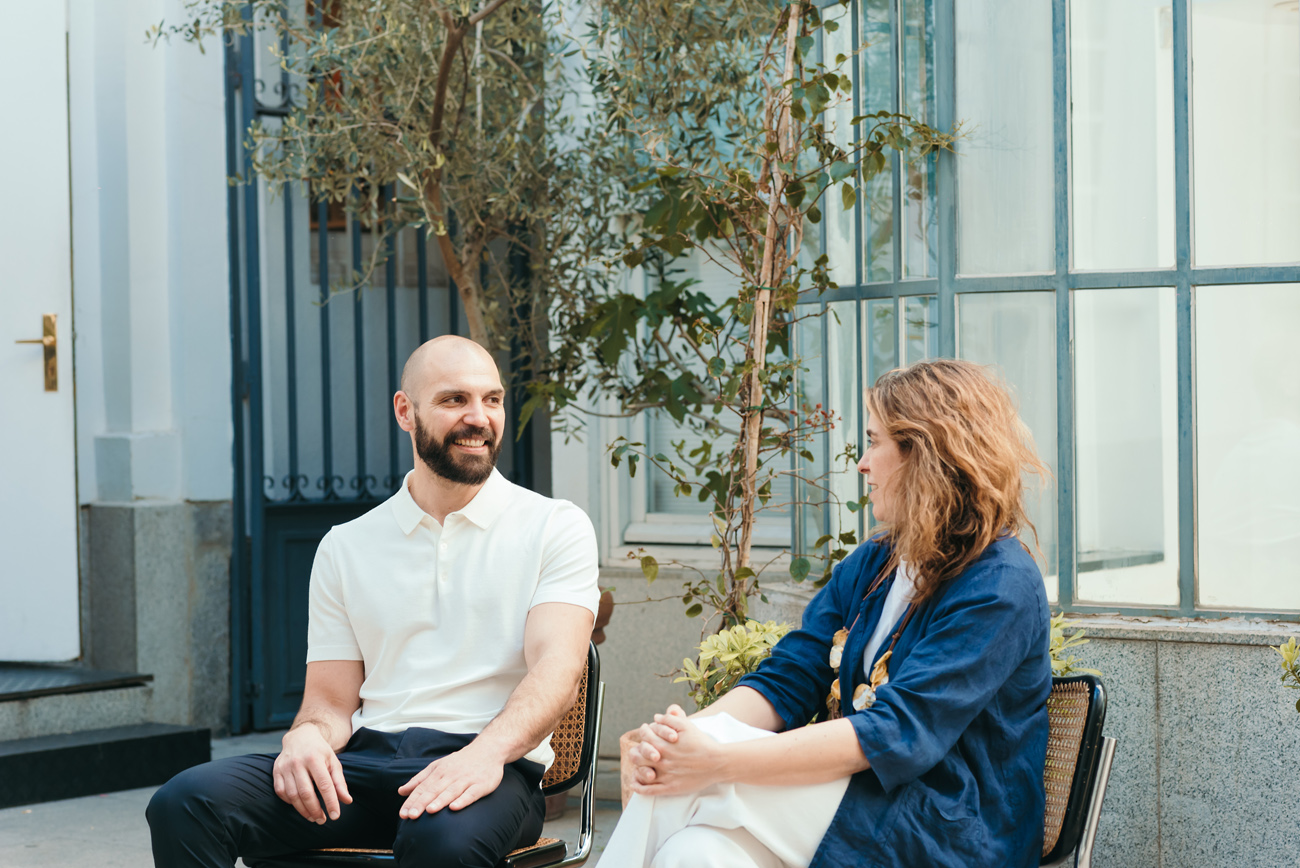
How do you approach each project you take on?
Even series that I thought were closed suddenly open up again and take a turn to become something else.
For example, the series ‘Y Vasca/Euskal Y’ was a work that I started in 2014 and for a series of circumstances I put it aside for a while and let it rest, always thinking of taking it up again at some point. Suddenly this project is reactivated in 2021 as a commission from the ICO Foundation for its 20/XXI project. Perhaps ten years ago my discourse was focused only on photographing infrastructure but now, years later, issues such as landscape, connectivity between cities, the connection of the people of the hamlets or how the construction of the Y affects rural areas become essential to understand this project. On the other hand, when photographing, we follow the work that has to do with technical aspects, the construction of a road deck, the viaducts, the waterproofing of a tunnel, etc., and all of this becomes an archival document of many layers.
I think it also has to do with the fact that we are maturing and interests begin to change and that makes projects to be completed or reopened and I would say that 80% of the projects are open and with the possibility of expanding or continuing, of taking an unexpected turn.
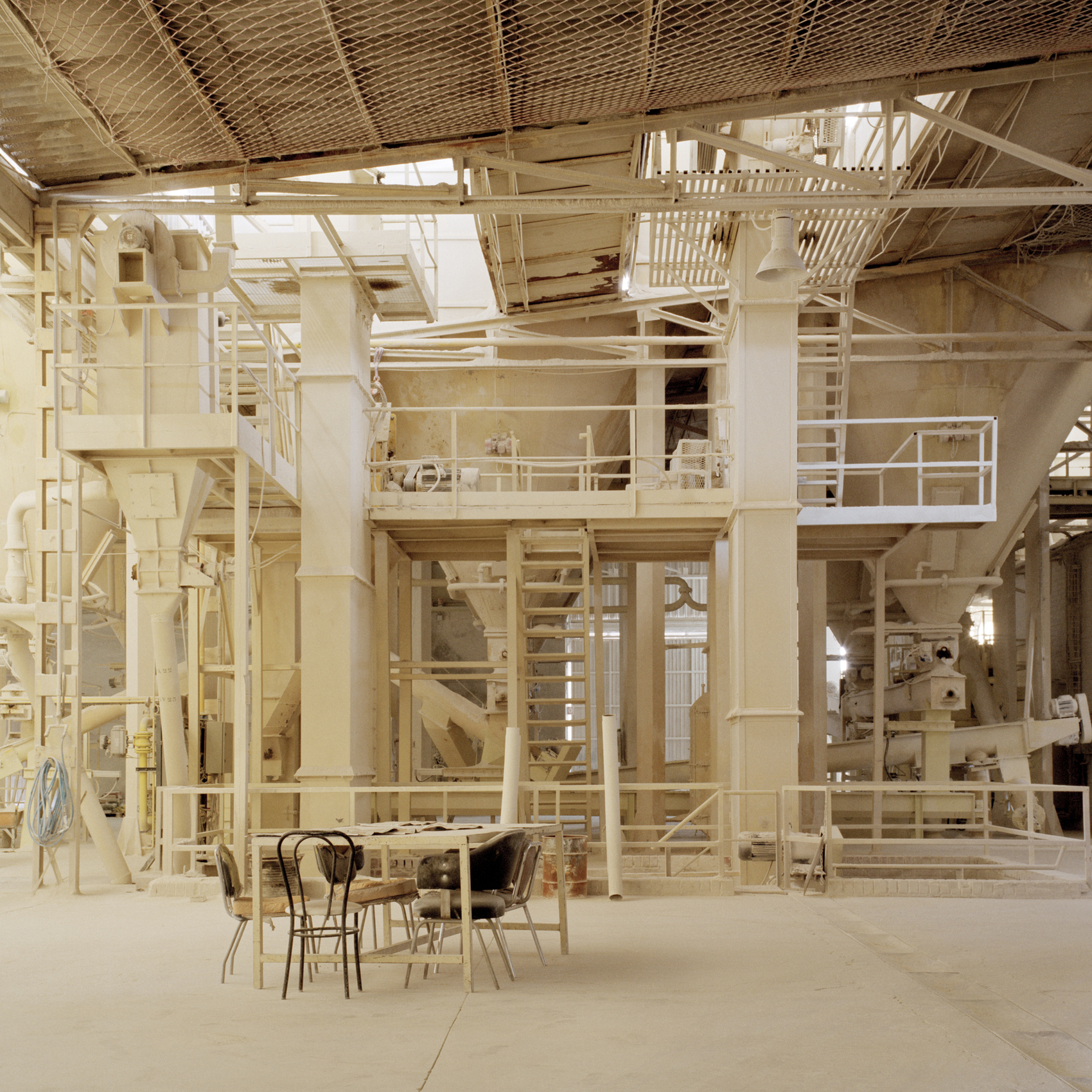
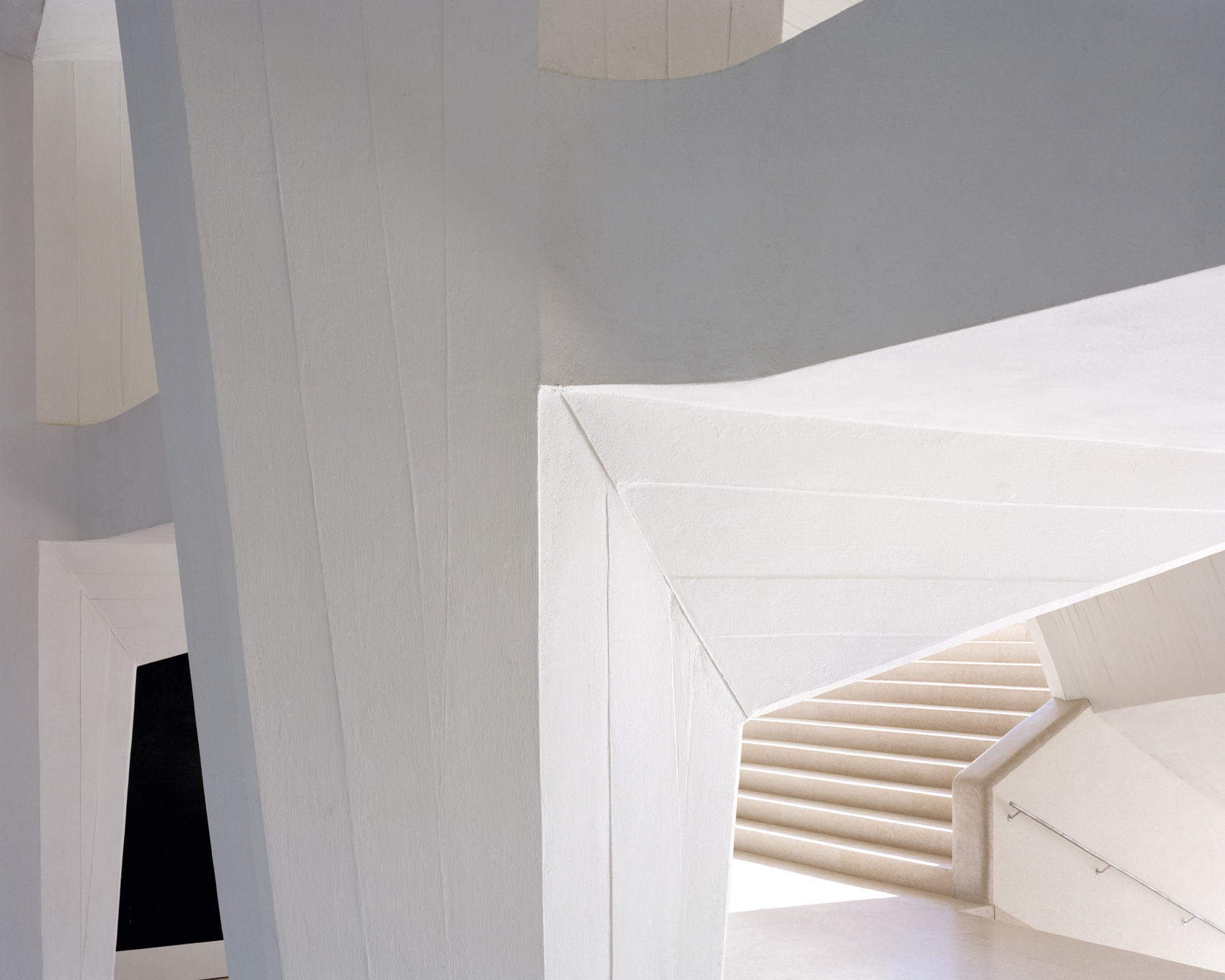
Your involvement in the mounting of exhibitions is a somewhat special process, tell us about it.
I always make demo models of the exhibition space where my work is going to be shown. I really enjoy this part of the process, which is different from being in front of the screen or working outside photographing. This is already part of the work in the studio, building models of all the projects. When I have a selection of photographs, I print them at 1:20 scale and mount them on cardboard with a magnet.
When I prepare an exhibition I always ask for the plans, photos and visit the place to build a model at the same scale and there I place the photos, especially to make the first compositions and see how the walls work and how the elevations look like to take them later to the computer. The ICO model occupied almost 2 square meters and I had it in the studio, so that I could go there every day and think about the arrangement of the photos in the rooms.
This job made it much easier for me to set up the exhibition and to be able to give the installation staff precise and accurate instructions.
Who are your mentors or sources of inspiration?
Earlier I mentioned Manolo Laguillo, who was a professor of mine at the University of Barcelona and whom I really admire a lot. Another name would be Wolfgang Tillmans, although my work has nothing to do with his. Whenever I see an exhibition of his announced somewhere, I travel to see it. In architecture I admire Peter Zumthor a lot, I love him and I do see that my photography has to do with his work, in fact, it would be a dream to be able to work with him or with one of his works in the future.
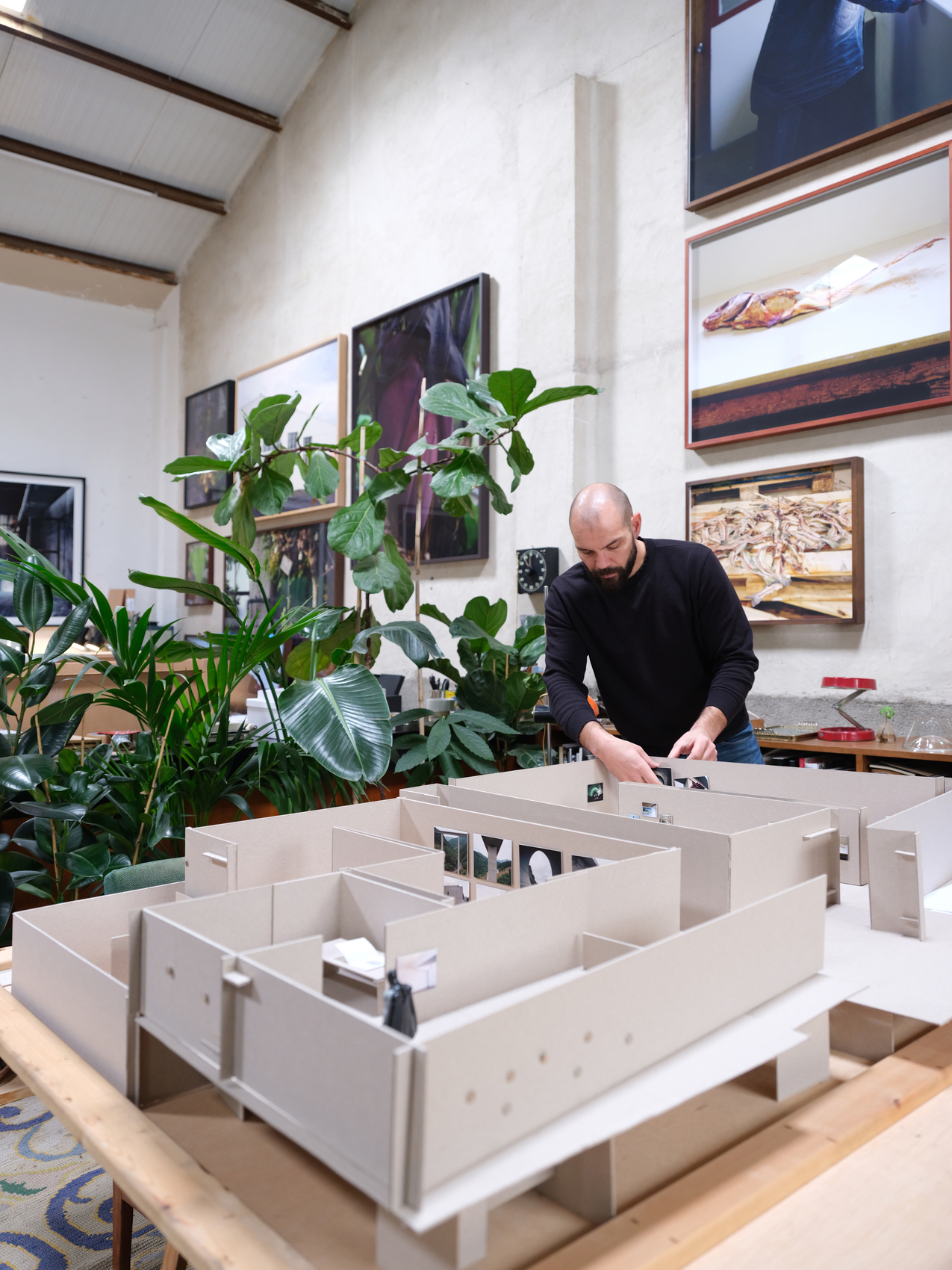
The self-produced book ‘A Rapa’ (2010), the artist’s book ‘Hipódromo’ (2021) and the catalog ‘Contra Todo lo que Reluce’ (2022) of the homonymous exhibition at the ICO Museum are three of your publications. You’re passionate about books or, perhaps better said, paper. What’s your relationship with this medium and what’s your next project in this regard?
I love having books, touching them, seeing the printed photograph, turning the pages. As an object, I like to enjoy the paper, the quality of the printing, the weight, the sequence of the images and the design. Sometimes I buy a book because I like the design, or simply the paper that has been used.
My next book will be the Florida Avenue project.
In March, we learned that your work ‘Parnassus’ has become part of the important Alcobendas Photography Collection, what does it mean to enter these funds?
If I’m not mistaken it is the largest public collection of photography that we have in Spain and this makes it something very important for a photographer. It is the result of the work of the artist and the gallery to place certain pieces in collections and try to make your work visible and, ultimately, it is a way for the artist or the photographer to grow and position himself.
You have inaugurated ‘Washington with Spanish eyes’, a series of exhibitions on the view that six Spanish artists have of the U.S. capital, how was the experience of being the first of them and what has it given you?
This is a very interesting initiative of the Cultural Office of the Embassy of Spain in the United States that called me to start this project, which consists of inviting photographers who have passed through the Academy of Spain in Rome to do a 10-day residency, develop a project and end with an exhibition. Afterwards, some of the works become part of the collection of the Embassy and the Ministry of Foreign Affairs.
As always, I get very excited about projects, and the ten days turned into three trips to DC and a series of over 100 photographs.
I chose to work on Florida Avenue, a fairly major artery in Washington DC, where a lot happens. The architecture changes almost every week and new buildings are being built at full speed, it’s a lively neighborhood where people from different backgrounds live together, with very different stories, in fact, the portraits are fundamental to understand this series.
Now I am starting to work on the edition of a book with Paripé Books that will come out at the end of this year.
In addition to this publication, what will we see of yours in the near future?
In November Florida Avenue will be exhibited at La Cometa Gallery (Madrid).
On the other hand, as a result of the exhibition ‘Norlandia’ at the RAC Foundation in Pontevedra, I have been thinking about a new project that reflects the world of Galician canneries and their importance in the fishing sector. I am in the process of looking for a small factory similar to the Icelandic one to photograph its interior, its workers and the processing of raw materials, so, maybe in the not too distant future I will have a new work that interrelates these two realities between Iceland and Galicia.

Editor: Beatriz Fabián
Beatriz is a journalist specialized in offline and online editorial content on design, architecture, interior design, art, gastronomy and lifestyle.
Photographer: Nieves Díaz.